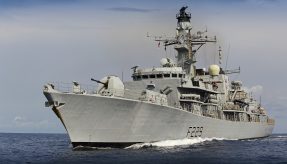
Writing for Defence Online, Andy German, Technical Director Resilience Engineering at Atkins, explores how enhancing data through connectivity and visualisation can improve safety.

Andy German, Technical Director Resilience Engineering at Atkins
As the Defence sector continues towards greater digitisation, it’s time to explore how ‘heating-up’ our data, and introducing interconnected visualisation and modelling technologies, can help us better manage safety.
From understanding the solar system to revealing the complexities of human DNA, scientists and engineers have long used models – from 3D orreries to double helixes – to express concepts, ideas, and new innovations.
In today’s Defence sector, where increasing amounts of hot, interconnected data is now at our disposal, we too must harness it to build models, to help us keep our soldiers, sailors, air crew and submariners safer during their rigorous training.
Those of us who work within the Defence sector fully understand that the safety of any piece of kit, electronic machinery, ship, or aeroplane, must minimise the risk of harming military personnel during their essential training.
As systems become more complex, and more connected, than ever before, and we integrate them together we’re also opening-up new possibilities for us to protect our systems: by creating models of the data that we hold today.
Goodbye check boxes
But the starting point isn’t a technological one. We need to start along this route by shifting mindsets; moving away from old ways of working, relying on document-based systems engineering, with its inherent inconsistences, check-box templates, informal diagrams, and reams of spreadsheets populated with cold, static, unconnected data.
Instead, we need to embrace the opportunities that dynamic, connected, data can bring.
We need to start embracing model-based systems engineering, and connecting our data to those models, creating a digital twin, so we can more fully understand and manage safety risks as systems interconnect, in near real-time.
What will the endgame look like? Instead of interpreting columns in a spreadsheet, we’ll have a visual representation of the arena, literally at our fingertips, and viewable on a user-friendly dashboards, using data visualisation software like Power BI or established risk management bowtie diagrams.
From there, we can produce reports at whichever frequency we choose, by the hour or day – not just months or years.
Welcome, digital twin
Indeed, this is already the direction of travel for other major infrastructure organisations, including transport.
In this Rail Director article published March 2021, Dr Sonia Zahiroddiny, Head of Digital Engineering for HS2, comments on their approach to managing the huge swathes of data and millions of documents involved in the overarching multi-billion-pound programme.
She said: “HS2 is too big and too complex to be managed using traditional static and document-based ways of working because we will be creating, and need to manage, large amounts of data.”
As such, HS2 is the first rail infrastructure programme to adopt building information modelling (BIM) techniques from the outset.
Other NATO countries are already on the digitisation and modelling route; the USA is a couple of years ahead of the game already, and some parts of the French defence system have been exploring what’s possible for several years.
In this article, French multinational Thales group explains how it’s using digital twin technology to train combat air pilots of the future. In the UK, we at Atkins are now fully invested in creating models to develop a workable proof of concept, too.
Safety on a screen
For all of us in Defence, this is our opportunity to build on industry experience of creating digital twins; experience that has already been gained by other UK organisations working on various schemes within the critical infrastructure sector.
Schemes such designing new hospitals, or creating a single, standardised data-sharing platform for the UK’s buried cables, pipes, and sewers.
Projects like these are also now becoming recognised by the international standard ISO19650, and form part of the UK’s National Digital Twin Programme.
We can now turn Defence safety data into something much more visual, and easier to interact with. We could connect it, model it – heat it up – and create its digital twin.
Seeing the endgame
The endgame means we’ll be able to visualise all kinds of interconnected, and interdependent activity, end-to-end, on a screen, as it happens.
We have the technology; so, we need to increase our appetite, and shift towards a different way of working in the Defence safety discipline, which quite understandably is conservative by nature.
There’s a very strong argument for digitising, modelling, and visualisation to help us manage safety in Defence.
Not just because we can, but because it gives us more confidence to say we’re exposing no soldier to undue risk. In short, supporting better safety management means we’re better safeguarding our people.
If you would like to join our community and read more articles like this then please click here.







